A superb Burrell showman’s engine project
Posted by Chris Graham on 28th March 2024
A collaborative Burrell showman’s engine project has resulted in a superb, show-stopping miniature, as Sally Clifford finds out.

Burrell showman’s engine project: The Grand Electric Scenic Railway showman’s miniature pictured after completion at John Rex’s workshop. (Pic: John Rex)
To many traction engine admirers and enthusiasts great and small, it’s the ‘aristocrat of steam’. Aside from the history and heritage which defines it, its mighty presence and ability to power fairground rides makes it more than just a distant yet pleasurable memory, and for those lucky enough to own one, it’s the stuff of dreams.
It certainly didn’t take Phil Pettinger long to take the plunge – the opportunity to own an iconic Burrell showman’s engine in miniature proved too great, and prompted him to part with the beloved Burrell he’d purchased previously.

Phil Pettinger in the driving seat. (Pic: Sally Clifford)
Incidentally, it was the initial purchase of the 4in single-crank, two-speed 7nhp Burrell traction engine he bought after seeing it advertised while on a work assignment in Scotland, that acquainted Phil with the work of John Rex. He’d met John while visiting a traction engine rally in his home county of Yorkshire – visiting rallies is an interest inherited from his father, Stan, who, Phil explained, has a keen interest in traction engines and steam railways.
Coincidentally, it transpired that John, an expert in building large-scale road engines and steel boilers through his business John Rex Model Engineers in Pontefract, West Yorkshire, had created the boiler for the engine, which prompted Phil to make the purchase. “As it happened, I was working in Edinburgh and there was an engine advertised, and it had one of John’s boilers in it.”

Burrell engine at the South Yorkshire Miniature Traction Engine Society gathering. (Pic: Sally Clifford)
Sadly, and according to Phil, the owner had fallen ill after the build, so the engine had been stored in a barn for many years. “It was a barn find. It was a lovely little engine, but a new tender was needed due to rot – it was stored with water in it. The boiler, however, was in perfect condition,” recalls Phil.
He says that the project also taught him a thing or two about steam engines. “I like mechanical engineering. If anything breaks at home I will take it apart and find out why. I like to understand how things work.” However, when it comes to projects on this scale, Phil prefers to leave it to the professionals.
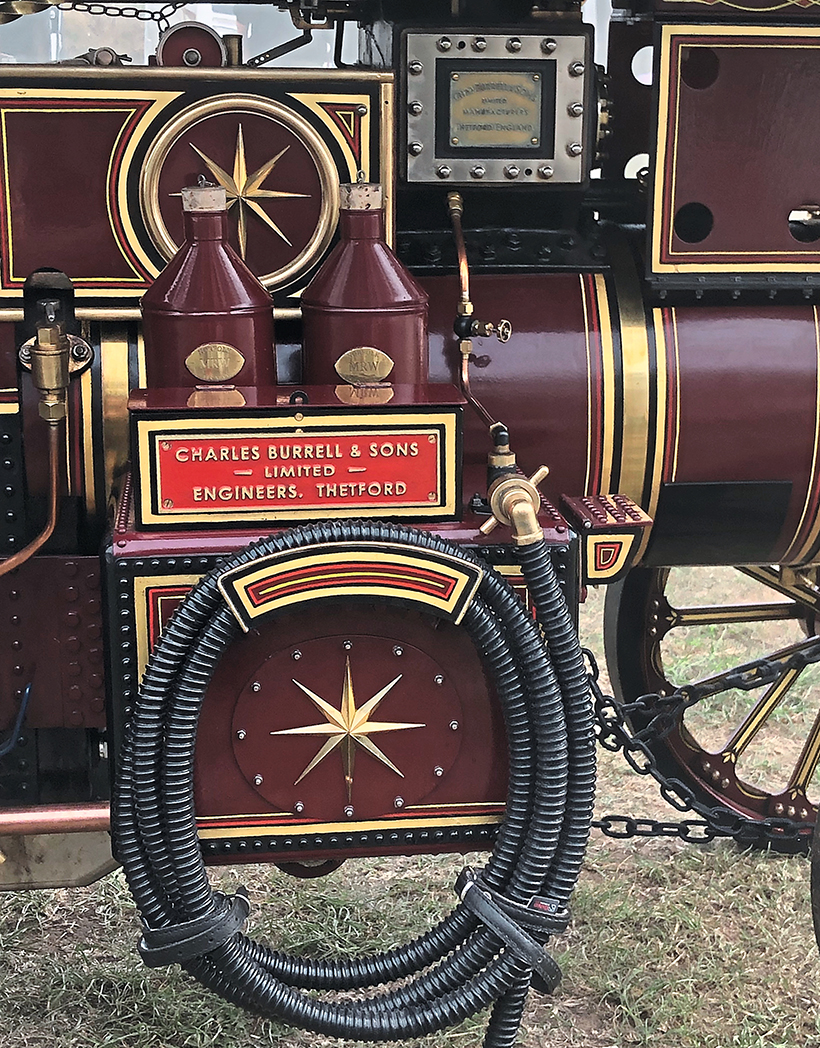
Attention to detail – the hose for drawing water on the miniature Burrell showman’s engine. (Pic: Sally Clifford)
Phil’s initial traction engine, purchased eight years ago, was an old Modelworks kit with a John Rex boiler. Complete with its 4in Ransomes, the engine was showcased at rallies including Masham and Driffield during that time, demonstrating baling and proving how powerful these engines are – even in miniature. “It was fully working, powered by the engine and making bales at a good few shows,” recalls Phil.
For Phil, a proud owner of a Hornby train set in boyhood, it was the perfect introduction into the world of miniature traction engines, and the stepping stone to owning one of the most iconic of them all – the Burrell Grand Electric Scenic Railway showman’s engine. “We always said we would never sell it. I looked after it really well and I must have run it for five years before we sold it,” says Phil.
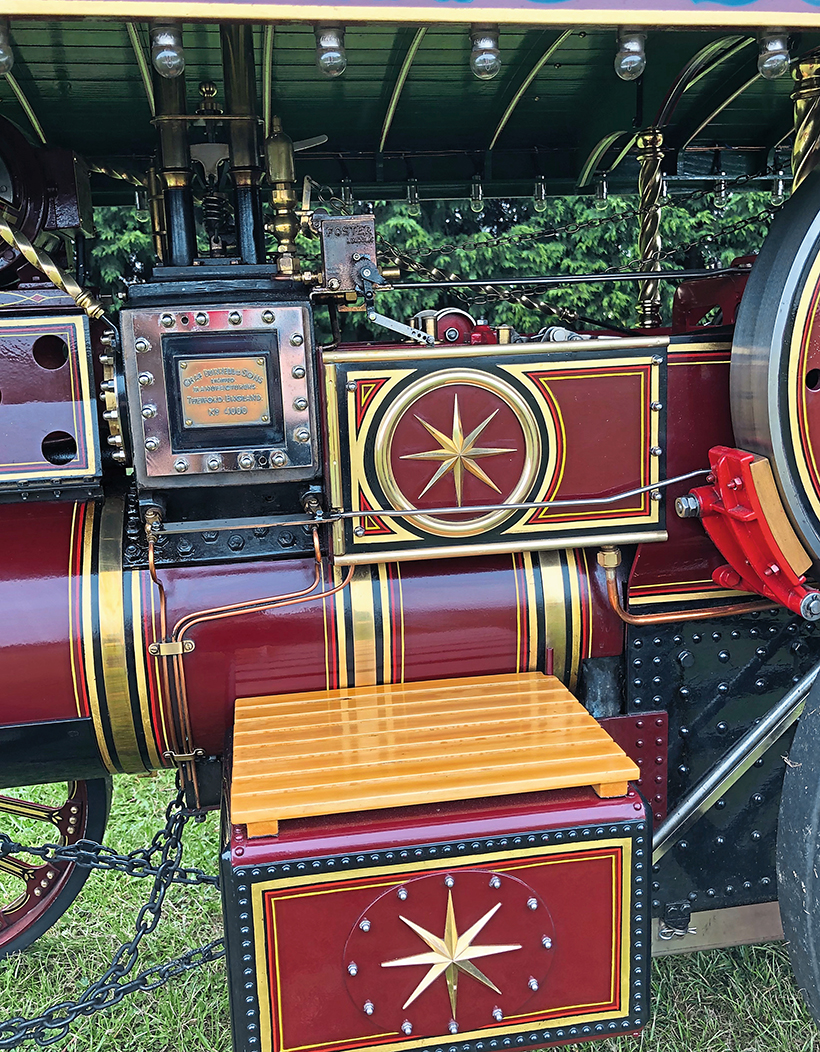
A closer inspection of the inner workings of the 4in showman’s engine. (Pic: Sally Clifford)
Then came the conversation that would see him part with his beloved Burrell. “John said ‘do you fancy doing a showman’s?’” recalls Phil, who didn’t need asking twice! “I said ‘go on then.’”
John already had part of the Steam Traction World kit in his workshop. He purchased the showman’s kit, along with three others, in 2017. Interestingly, a customer of Steam Traction World had purchased the fully machined kits from them and they had been stored all together in a container over a decade or more, and were still in their original boxes as supplied by STW. Some were stored in John’s works and others had been built for customers.
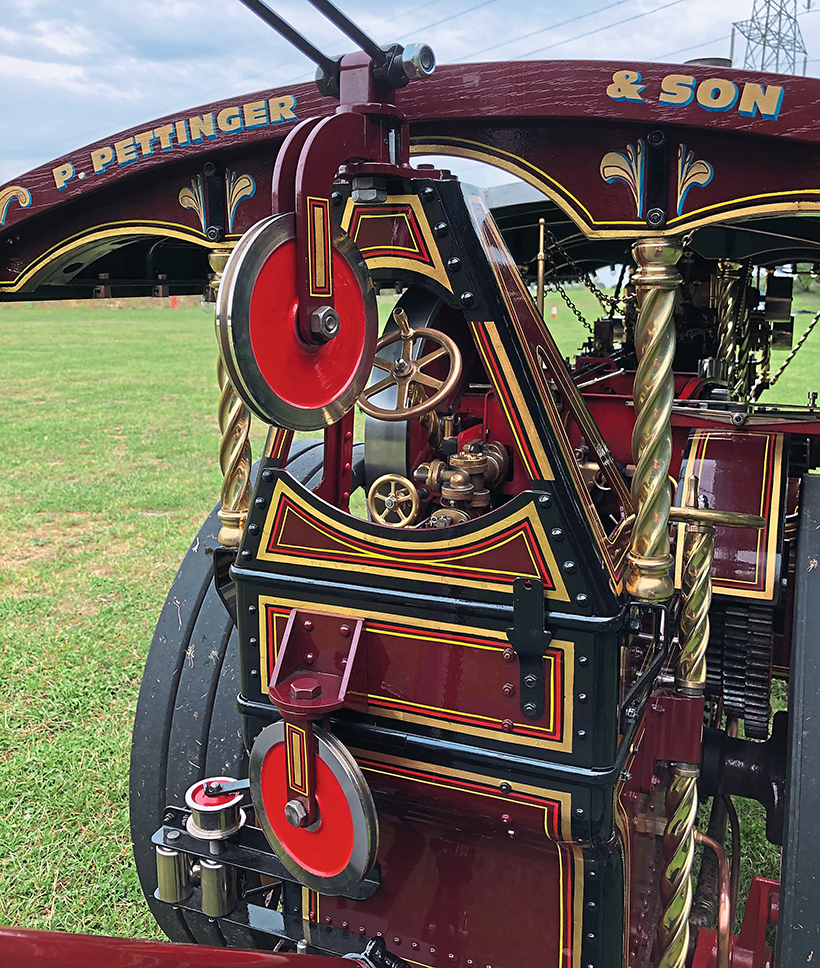
The rear of Phil Pettinger’s 4in miniature showman’s engine. (Pic: Sally Clifford)
John’s intention was to build the showman’s “for myself when I had a minute,” he explained.
Having refurbished Phil’s first engine, they were already acquainted as they are also members of the South Yorkshire Miniature Traction Engine Society. John also knew of Phil’s interest in a showman’s engine. And so, following the initial conversation around Christmas 2019, Phil made the phone call to John in January which would kick-start the two-and-a-half year project to build the steam dream.

A working crane was added to the tender. (Pic: Sally Clifford)
Progression was stunted slightly during the pandemic, but the project ploughed on. “The pandemic hit, which didn’t do us any favours, but there were no rallies. Nothing happening, during the pandemic, so there was no real rush to get it into one piece. We started getting going with it at the back end of last year,” explains Phil, who has the responsible role of polishing!
Finally Henry II – a 4in DCC Burrell Scenic showman’s engine and christened after Phil’s 10-year-old son – was complete in July 2022. John explains the engine is based on Burrell’s original 1925 No. 4000 Ex-Mayor, and is a 10nhp compound engine.
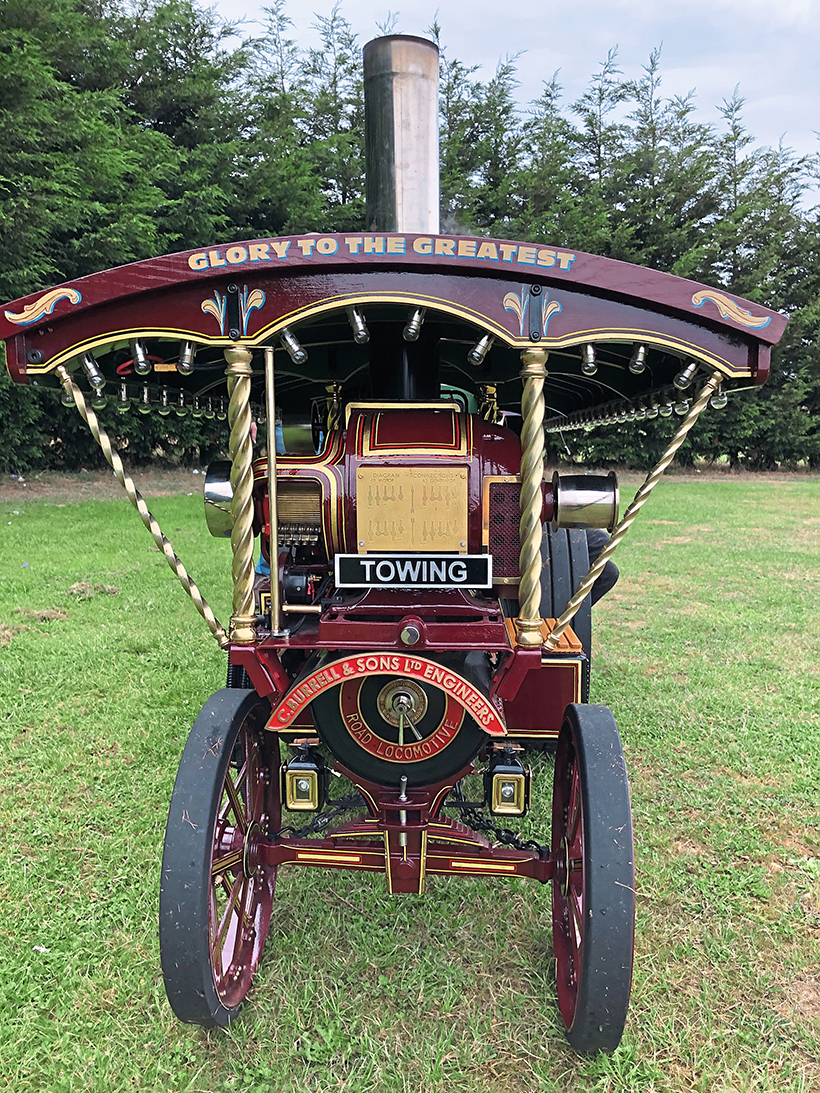
‘Glory to the Greatest’ – the wording says it all. (Pic: Sally Clifford)
“The brief of the build was that the engine was to be a bit like Dolphin (as owned by Mike Dreelan), but not a direct copy,” explains John. The original was one of the special scenic showman’s road locos produced by Burrell at the firm’s Thetford works. These engines were fitted with auxiliary dynamos to generate the electricity for the Electric Scenic Railway rides, which is why they became known as the ‘Scenic’ engines.

The extension chimney lies above the flywheel and other intricate workings on this stunning collaboration. (Pic: Sally Clifford)
“The build itself wasn’t immensely challenging as we had built an STW double-crank compound and shipped it to America only two years previously, so we knew which parts to alter etc,” explains John. He and his team carried out certain modifications, including new steam fittings, and the engine colour (Dreelan Crimson) was specially ordered from Craftsmaster Paints. Extra twisted brass was added to the steering shaft, flywheel brake shaft and brake shaft to emulate Dolphin. Phil specially ordered the 4in scale Regis lamps from the Traction Engine Lamp Company.
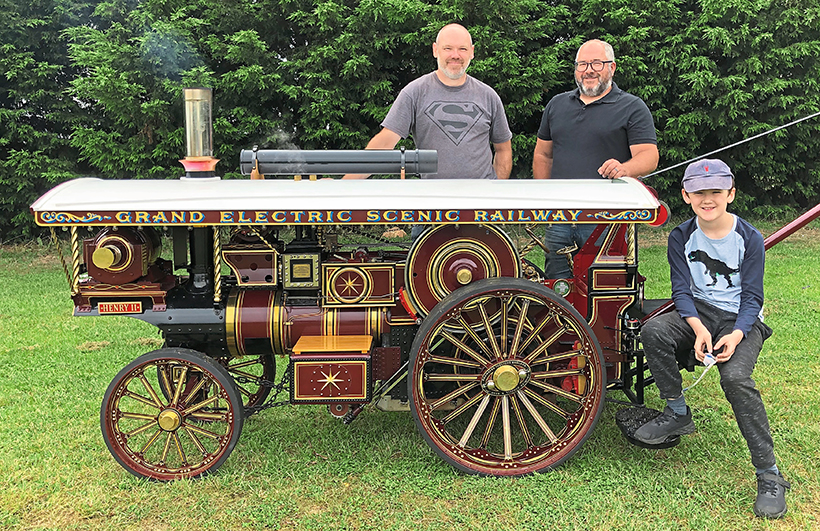
Team work – Phil Pettinger, John Rex and Henry. (Pic: Sally Clifford)
A removable hatch was added to assist with driving, allowing light into the tender and improving visibility. The switchboard was also modified, similar to the full-size version. A working crane was added to the tender – the original engines were fitted with extended bunker crane bars for use with a jib crane. The crane attachment gave the engine that special touch when compared to John’s previous showman’s projects; a 6in engine living in Ireland and a 4½in Foden showman’s steam wagon on the south coast. “It was fabricated to fit the tender with all ancillaries such as pulleys and pole, with all dimensions taken from original works drawings, but also to fit around the workings of the Steam Traction World tilting awning,” explains John. The awning was modified with new wood latts and barge boards front and rear, for the sign-writing to be applied.
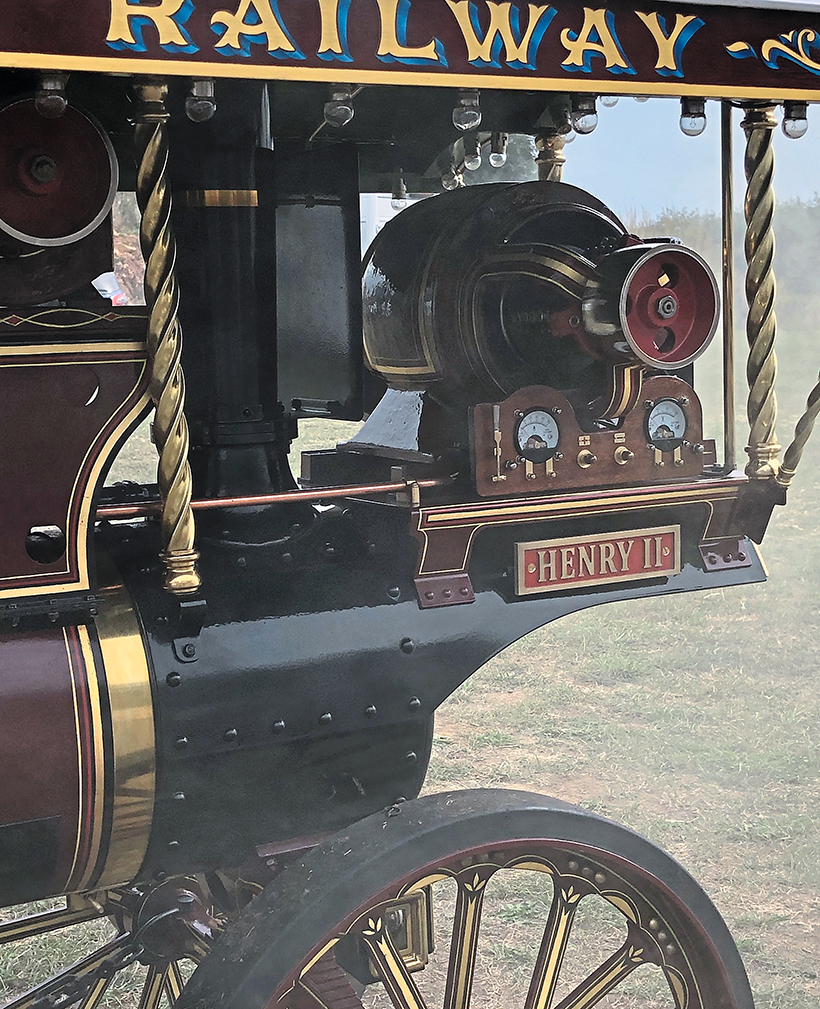
The lighting board made to emulate Dolphin, where the power from the dynamo goes, sits above the nameplate Henry II. (Pic: Sally Clifford)
The 24-carat gold leaf lining, including fleur-de-lys on the wheels, was new territory for John, and proved to be the most challenging part of the project. However, a chance meeting with Stuart Duncumb of S Duncumb Sign Writing at Statfold Barn Giant Miniature Weekend gave John the opportunity to see Stuart’s work on his own, 6in Little Samson. Stuart agreed to travel to Yorkshire to carry out the work.
Following successful steaming and a test drive, the engine made its debut at Masham in 2022 – much to the delight of the crowds and its creators. “It was one of those ‘we will see how it goes’ days – a brand new engine always has teething troubles, and there’s always something to do with it, but it performed brilliantly,” says Phil, who recalls going to Masham rallies as a young boy with his father. “It went on a road run, did the arena and performed faultlessly.”
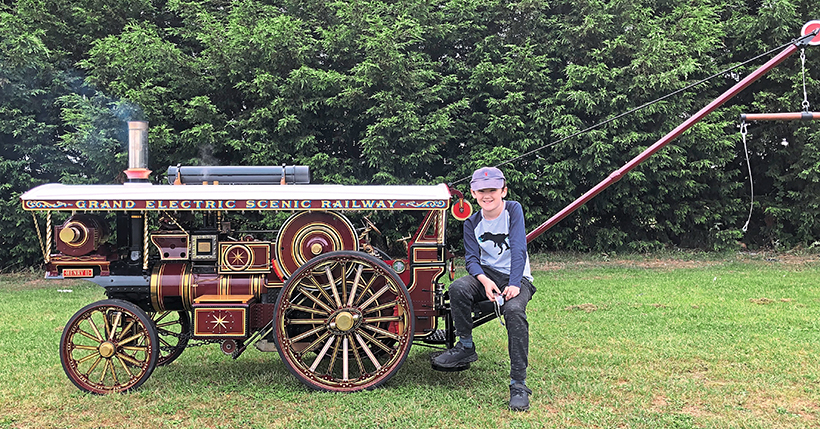
Henry, Phil Pettinger’s son, with his mechanical namesake. (Pic: Sally Clifford)
The only difficulty Phil has found is manoeuvring the engine, which measures nine foot in length and weighs over a tonne. As well as the enjoyment of being part of the collaborative project, Phil says he’s also proud to show off the skills involved with creating such a fine engine. “It has been nice; you are more of a custodian of it and you hope it will be around for a long time and passed on. “You feel proud of the engine and it showcases the incredible abilities of the people who built it,” says Phil. “It’s great for people to see it and it’s certainly a pretty machine.
This feature comes from the latest issue of Old Glory, and you can get a money-saving subscription to this magazine simply by clicking HERE
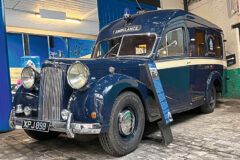
Previous Post
Visiting the excellent National Emergency Services Museum
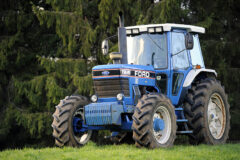
Next Post
In praise of the Ford TW-15, the baby giant!



